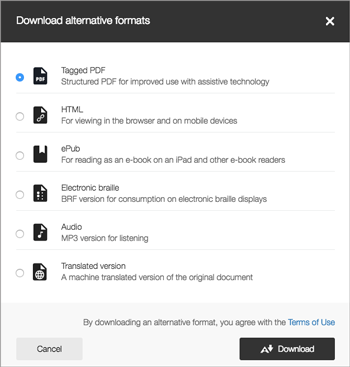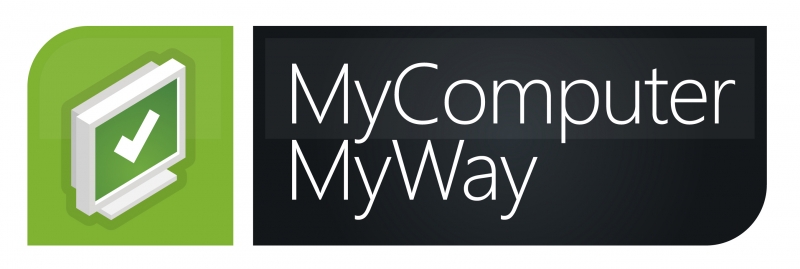Accessibility Statement
This website is run by the School of Advanced Study, University of London. We want as many people as possible to be able to use this website. For example, that means you should be able to:
- Access all files in a variety of accessible formats
- Easily navigate the Website using a variety of devices and tools
- Zoom in up to 300% without the text spilling off the screen
We have also made the website text as simple as possible to understand.
The website has not yet been tested for:
- Navigating most of the website using just a keyboard
- Navigating most of the website using speech recognition software
- Listening to most of the website using a screen reader
AbilityNet has advice on making your device easier to use if you have a disability.
The Accessibility of this Website
We know some parts of this website are not fully accessible:
- You cannot change colours, contrast levels and fonts without using additional browser plugins
- You cannot modify the line height or spacing of text
- Live video streams and webinar recordings do not always have captions
The tutorials and Programme module pages use the Tiles format to display content. This format may cause difficulties for students with specific disabilities. If the format is proving difficult please email Studyonline_Support@sas.ac.uk to request that specific tutorials and modules are temporarily converted to a more accessible format.
What to do if you cannot access parts of this website
Most files can be accessed in a variety of alternative formats. To access these alternative formats, select the download button ![]() next to the file name to bring up a list of formats.
next to the file name to bring up a list of formats.

You can access most files in the following formats:
- a Tagged PDF
- HTML
- ePub
- Electronic braille
- Audio (MP3)
- Translated version [machine translated]
Some interactive content may not be accessible to all students but in most cases an alternative version will be provided (usually in PDF format).
In cases where an alternative version has not been provided please email Studyonline_Support@sas.ac.uk to request an alternative version. We will consider your request and get back to you within 10 working days.
Browser plugins can be used to help improve colour, contrast, and text size issues. See the following information for the most common browsers:
- Internet Explorer
- Microsoft Edge
- Chrome
- Firefox
- Safari and Apple devices accessibility support
- Windows 10 accessibility support
Reporting accessibility problems with this website
We are always looking to improve the accessibility of this website. If you find any problems that are not listed on this page or think we are not meeting accessibility requirements, please email Studyonline_Support@sas.ac.uk
Enforcement procedure
The Equality and Human Rights Commission (EHRC) is responsible for enforcing the Public Sector Bodies (Websites and Mobile Applications) (No. 2) Accessibility Regulations 2018 (the ‘accessibility regulations’). If you are not happy with how we respond to your complaint, contact the Equality Advisory and Support Service (EASS).
Technical information about this website’s accessibility
The University of London is committed to making its website accessible, in accordance with the Public Sector Bodies (Websites and Mobile Applications) (No. 2) Accessibility Regulations 2018.
This website is partially compliant with the Web Content Accessibility Guidelines version 2.1 AA standard, due to the non-compliances listed below.
Non accessible content
The content listed below is non-accessible for the following reasons.
Images
- Not all images contain text alternatives that serve the equivalent purpose.
- Text equivalents are not always available for images or graphics in the form of Alt text.
- Images are not always placed in a logical order within text, meaning screen readers may not pick it up.
- Where information is displayed in visual format, there may not be enough contrast between foreground and background so users of all visual abilities can discern differences.
Text
- Standard text formatting conventions for headings, paragraphs, lists, tables are not consistently adhered to when adding text via a text editor.
- Where text has been copied and pasted and formatting has not been stripped from the original source, this can impact text-to-speech technology by adding extra formatting.
- Correct sequencing of content through the use of appropriate formatting, is not consistently applied.
Hyperlinks
- Some links may not be visually evident and use of colour alone must not be used to indicate links e.g. links are underlined
- Not all hyperlinks point to descriptive text which informs the user of the links purpose or location.
Documents
- Not all documents use standard text formatting conventions for headings, paragraphs, lists and tables. Some of our older PDF documents may not be fully tagged or marked up to be accessible to a screen reader.
- Some documents are scanned images, which are not accessible in full using text-to-speech technology, unless the same information is conveyed in an alternative format (such as audio)
- Not all images in documents follow the same accessibility requirements for images in the VLE.
- Not all names of documents are descriptive and may not clearly identify documents without confusing with other documents on the VLE.
Video and audio
- Some of our older content does not have provide a text alternative such as transcripts.
- Some videos are not offered in different resolutions, allowing users the choice of watching the smaller, lower resolution version.
- Most audio content does not provide closed captions.
- Some audio content quality is not as good as it could be.
- Where content contains flashing images, clear warnings do not play on screen before content starts playing.
Interactive content
Where interactive content is not automatically in a fully accessible form an alternative PDF has been produced. It should be noted that some of this content has not yet been converted.
Lecture Capture and Live Streams
These do not have captions or audio descriptions.
Web Conference technology
We use a variety of tools for video conferencing. The main ones are outlined below:
- For full details on Zoom's accessibility capabilities and how to set them up, see the Zoom accessibility page [external link].
- For full details of Microsoft Teams' accessibility capabilities and how to set them up, see the Teams accessibility overview page [external link].
- For full details on Adobe Connect's accessibility capabilities see the Adobe Connect accessibility pages [external link].
Non-compliance with the accessibility regulations
We are working to ensure that all files are accessible using the Blackboard Ally plugin as our guide. However, this is a work-in-progress. Some images will not yet have a text alternative, so the information in them is not available to people using a screen reader. This does not meet WCAG 2.1 success criterion 1.1.1 (non-text content).
Some PDF’s are scanned and cannot be easily OCRed to a good standard, or contain other forms of mark up, including alternative text.
Disproportionate burden
Navigation and accessing information
There is no way to skip the repeated content in the page header (for example, a ‘skip to main content’ option). This does not meet WCAG 2.1 success criterion 2.4.1 (bypass blocks).
Interactive tools and transactions
Some of our interactive forms are difficult to navigate using a keyboard. For example, because some form controls are missing a ‘label’ tag.
We have assessed the cost of fixing the issues with navigation and accessing information, and with interactive tools and transactions. We believe that doing so now would be a disproportionate burden within the meaning of the accessibility regulations. We will make another assessment when the supplier contract is up for renewal, likely to be in 1 years’ time.
Content that’s not within the scope of the accessibility regulations
Live video
Live video streams do not have captions. This does not meet WCAG 2.1 success criterion 1.2.4 (captions - live).
We do not plan to add captions to live video streams because live video is exempt from meeting the accessibility regulations.
How we tested this website
This website was last tested on 03 May 2022 using accessibility scanning software. The test was carried out internally and is of a limited scope. In the process of testing we used wave.webaim.org to check for accessibility issues on the website. We based our test on a sample of template pages and on the website home page, making adjustments where possible.
Further Resources
 My Computer My Way was
developed by AbilityNet with support from Microsoft and the BBC as a source of accessibility help for all computer users.
My Computer My Way was
developed by AbilityNet with support from Microsoft and the BBC as a source of accessibility help for all computer users.
This unique resource explains all the accessibility features available in popular desktop computers, laptops, tablets and smartphones, including Windows, Mac OSX, iOS, Android and Windows Phone. All of these devices have features that enable people to adapt their computer to suit their needs, such as changing the colours and text size or using voice activation.
Take a look at My Computer My Way to find out more about what features you could be using.
This statement was prepared on 28 August 2019. It was last updated on 03 May 2022.
